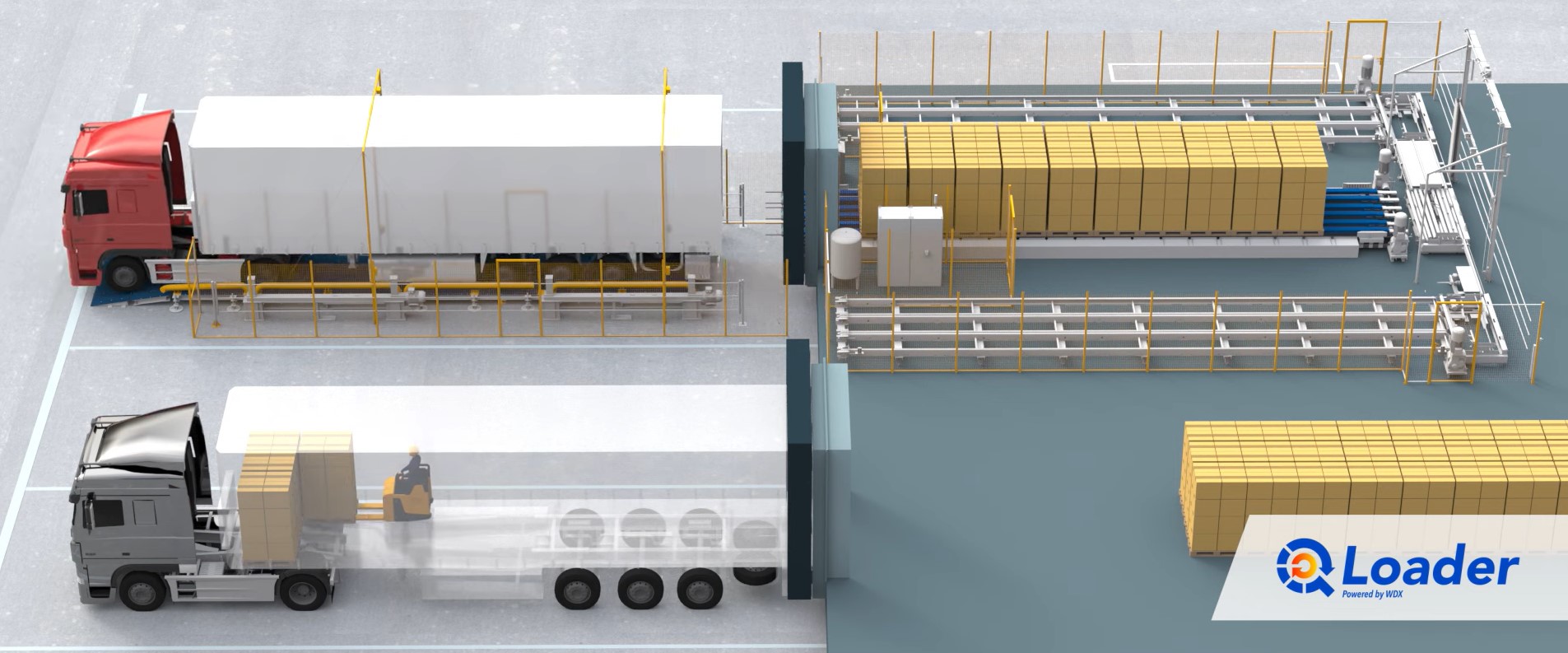
Heat Exchangers Market by Type (Shell & Tube, Plate & Frame, Air Cooled, and Others), by Material (Metals, Alloys, and Brazing-CLAD), and End User (Chemical, Energy & Power, Heating, Ventilation, Air Conditioning, and Refrigeration (HVACR), Food & Beverage, Pulp & Paper, and Others)– Global Opportunity Analysis and Industry Forecast, 2024–2030
Industry: Construction & Manufacturing | Publish Date: 06-Mar-2024 | No of Pages: 366 | No. of Tables: 278 | No. of Figures: 246 | Format: PDF | Report Code : N/A
Market Overview
The global Heat Exchangers Market size was valued at USD 18.5 billion in 2023 and is predicted to reach USD 30.8 billion by 2030, with a CAGR of 6.9% from 2024 to 2030. Heat exchangers are devices created to move heat from one fluid to another without the fluids directly contacting each other, extensively used in industrial, commercial, and residential settings including HVAC systems and refrigeration units to efficiently heat or cool fluids or air.
These steam generators work by allowing heat to pass through a barrier, such as a solid wall or a series of plates or tubes, and can be employed for tasks such as heating water in a boiler or cooling air in an air conditioning system. These devices come in various designs tailored to specific needs, ranging from simple radiator coils to complex systems found in chemical processing plants and power generation facilities.
Heat exchangers are vital in multiple industries and applications, regulating air temperature in buildings, facilitating steam production in power plants, controlling temperatures during chemical reactions, and aiding in food processing, among other uses.
Additionally, they are essential components in automotive cooling systems and have widespread applications in aerospace, marine, and wastewater treatment industries, playing a crucial role in efficient thermal management and energy transfer.
Growing Industrialization and Urbanization across the Globe drive market growth
The rapid increase in industrialization and urbanization worldwide is a key factor driving the growth of the heat exchangers market. With the expansion of manufacturing, energy, and construction industries, there is a growing demand for efficient heat exchange solutions to meet various industrial requirements.
Sectors including power generation, where heat exchangers play a crucial role in steam generation and turbine cooling, are experiencing significant growth due to rising energy needs. Additionally, this rise is leading to a surge in construction projects, resulting in higher demand for HVAC systems in both commercial and residential buildings. This, in turn, boosts the need for heat exchangers in air conditioning and refrigeration applications.
Furthermore, the ongoing rise of the global middle class and the increasing urbanization trend are driving notable shifts in the heat exchanger equipment market. According to the latest report by the United Nations, over 55% of the world's population now resides in urban areas, a percentage expected to reach 68% by 2050.
This demographic shift is accompanied by a rising demand for convenient food options and efficient supply chains that make optimal use of resources like energy, water, and raw materials. Moreover, consumers are increasingly seeking food and beverage products with minimal environmental impact, including those produced sustainably or with eco-friendly packaging.
Stringent Government Regulations Regarding Energy Efficiency Boost Market Expansion
The rise in regulations aimed at improving energy efficiency and reducing emissions stems from a heightened awareness of the environmental impact of industrial operations. Governments and regulatory bodies worldwide are implementing strict standards such as India's Energy Conservation Act and the US Energy Policy Act to combat climate change and encourage sustainable practices.
In response, industries are increasingly turning to heat exchangers to optimize energy usage and reduce their carbon footprint. Among these industries, the chemical sector stands out as the largest user of heat exchangers, comprising over 30% of the global market share.
By embracing these energy-efficient technologies, industries comply with regulatory requirements and contribute to a greener future by reducing greenhouse gas emissions and conserving natural resources. Therefore, the growing utilization of heat exchangers underscores a significant shift towards environmentally conscious practices within industrial sectors worldwide.
High Installation and Maintenance Costs Restrain the Market Growth
High initial costs and ongoing maintenance expenses constitute significant factors restraining the growth of the heat exchanger market. The substantial investment required for purchasing and installing heat exchangers, particularly in large-scale industrial applications, restrains companies, particularly those with limited financial resources, from adopting this technology.
Additionally, while heat exchangers offer long-term cost savings through energy efficiency, they still entail regular maintenance and operational costs, including cleaning and repairs. As a result, the perceived financial burden associated with heat exchangers may act as a barrier to their widespread adoption, impeding market growth in specific sectors.
Advancements in Cutting-Edge Materials and the Rising Trend of Industry 4.0 Create Market Opportunities
Incorporating advanced materials such as graphene and advanced ceramics represents a significant advancement in heat exchanger technology. These materials possess exceptional characteristics, including high thermal conductivity and corrosion resistance. Consequently, they hold substantial promise for enhancing efficiency, durability, and overall performance across various industries, including HVACR, automotive, aerospace, and renewable energy.
By leveraging these unique attributes, heat exchangers can facilitate more efficient heat transfer and better withstand challenging operating conditions, thereby improving reliability and extending lifespan. Furthermore, the adoption of advanced materials has the potential to reduce energy consumption and prolong service life by approximately 5 to 10 years, resulting in significant benefits in terms of operational efficiency and sustainability across diverse sectors.
Additionally, the emergence of Industry 4.0, characterized by the integration of automation, data exchange, and digital technologies in manufacturing processes, presents additional opportunities for advancing heat exchanger technology. Through enhanced monitoring, control, and optimization enabled by Industry 4.0 technologies, heat exchangers can achieve increased efficiency and productivity.
Thus, the synergy between advanced materials and Industry 4.0 advancements is poised to drive innovation and growth in the heat exchanger market, promising improved performance and sustainability in various industrial applications.
Asia Pacific Dominated the Heat Exchangers Market
Asia Pacific dominates the heat exchangers market, primarily driven by the growing chemical industry in countries such as China, India, and Japan. According to the latest report from The European Chemical Industry Council, China is the most extensive chemical-producing country globally, contributing to over 40% of the global chemical industry.
With robust manufacturing capabilities and favorable government policies, China has recorded chemical sales exceeding USD 2500 billion in 2022 alone, solidifying its status as a key driver of heat exchanger demand. Beyond the chemical sector, highlighting its pivotal position in shaping global market trends. With continued industrial expansion and innovation, the Asia Pacific region is poised to maintain its leadership in the heat exchangers market for the foreseeable future.
Moreover, with the rising urbanization in countries such as India, Thailand, and Philippines, the demand for heat exchangers is poised to rise in this region, further boosting the growth of the market. According to the United Nations, India's population is expected to reach 1.64 billion by 2047, with an estimated 51% residing in urban areas.
As urban populations grow, there is a greater need for infrastructure development, including buildings, transportation systems, and industrial facilities, all of which rely heavily on heat exchangers for various applications such as heating, cooling, and air conditioning (HVAC) systems, refrigeration, and industrial processes.
Additionally, the expanding urban landscape creates greater demand for energy-efficient solutions to meet the increasing demands for HVAC, further contributing to the overall growth of the market in the Asia Pacific region.
Additionally, it is projected that by 2030, approximately half of the top ten chemical companies globally will be based in the Asia-Pacific region. As Asia Pacific continues to assert its dominance in the global chemical sector, it is anticipated to drive substantial growth in the heat exchangers market in the coming years.
Moreover, the Asia Pacific region is expected to experience a steady increase in the demand for heat exchangers in the upcoming years. This projection is supported by factors such as India's status as the world's third-largest energy consumer and one of the fastest-growing economies.
As there is a growing emphasis on energy efficiency, the demand for energy resources continues to rise. To address this demand, the Indian government has approved the construction of 10 new nuclear power plants.
This development is anticipated to significantly boost the demand for heat exchangers, as these plants rely on efficient heat exchange processes for power generation and other essential operations. Consequently, the establishment of nuclear plants for energy production will drive the demand for heat exchangers in this region, thereby contributing to the steady growth of the market in the Asia Pacific.
Competitive Landscape
Several market players operating in the heat exchangers industry include Alfa Laval AB, Johnson Controls International plc, Carrier Global Corporation, Lennox International Inc., Trane Technologies plc, API Heat Transfer Inc., Kelvion Holding GmbH, Xylem Inc., Danfoss Group, and General Electric Company among others. These companies are adopting various strategies such as product launches to remain dominant in the heat exchangers market.
For instance, in October 2023, Lennox acquired AES to expand its commercial HVAC services across North America. The acquisition is expected to provide new offerings for customers and support the growth strategy of Lennox's Commercial Heating and Cooling Business Segment.
Moreover, in May 2023, Xylem launched a new series of High-Efficiency Gasketed Plate and Frame Heat Exchangers (GPX) with enhanced "X" plate technology. This advancement improves heat transfer efficiency by up to 20% while simultaneously reducing surface area by up to 20% and minimizing material usage by up to 15%.
Additionally, in March 2023, Alfa Laval launched the AlfaNova GL50, which is the first heat exchanger developed specifically for fuel cell systems. This development is significant due to the increasing role of fuel cells in the global transition to green energy.
Heat Exchangers Market Key Segments
By Type
-
Shell & Tube
-
Fixed Tube Heat Exchangers
-
U-Tube Heat Exchangers
-
Floating Head Heat Exchangers
-
Other Shell & Tube Heat Exchangers
-
-
Plate & Frame Heat Exchangers
-
Gasketed Plate & Frame Heat Exchangers
-
Welded Plate & Frame Heat Exchangers
-
Brazed Plate & Frame Heat Exchangers
-
Other Plate & Frame Heat Exchangers
-
-
Air Cooled
-
Forced Draft Heat Exchangers
-
Induced Draft Heat Exchangers
-
-
Others
By Materials
-
Metals
-
Alloys
-
Brazing-CLAD
By End User
-
Chemical
-
Energy & Power
-
HVACR
-
Food & Beverage
-
Pulp & Paper
-
Others
By Region
-
North America
-
The U.S.
-
Canada
-
Mexico
-
-
Europe
-
The U.K.
-
Germany
-
France
-
Italy
-
Spain
-
Denmark
-
Netherlands
-
Finland
-
Sweden
-
Norway
-
Russia
-
Rest of Europe
-
- Asia-Pacific
-
China
-
Japan
-
India
-
South Korea
-
Australia
-
Indonesia
-
Singapore
-
Taiwan
-
Thailand
-
Rest of Asia-Pacific
-
-
Rest of the World (RoW)
-
Latin America
-
Middle East
-
Africa
-
REPORT SCOPE AND SEGMENTATION:
|
Parameters |
Details |
|
Market Size in 2023 |
USD 18.5 Billion |
|
Revenue Forecast in 2030 |
USD 30.8 Billion |
|
Growth Rate |
CAGR of 6.9% from 2024 to 2030 |
|
Analysis Period |
2023–2030 |
|
Base Year Considered |
2023 |
|
Forecast Period |
2024–2030 |
|
Market Size Estimation |
Billion (USD) |
|
Growth Factors |
|
|
Countries Covered |
28 |
|
Companies Profiled |
10 |
|
Market Share |
Available for 10 companies |
|
Customization Scope |
Free customization (equivalent up to 80 working hours of analysts) after purchase. Addition or alteration to country, regional, and segment scope. |
|
Pricing and Purchase Options |
Avail customized purchase options to meet your exact research needs. |
KEY PLAYERS
-
Alfa Laval AB
-
Johnson Controls International plc
-
Carrier Global Corporation
-
Lennox International Inc.
-
Trane Technologies plc
-
API Heat Transfer Inc.
-
Kelvion Holding GmbH
-
Xylem Inc.
-
Danfoss Group
-
General Electric Company




 Speak to Our Analyst
Speak to Our Analyst


































